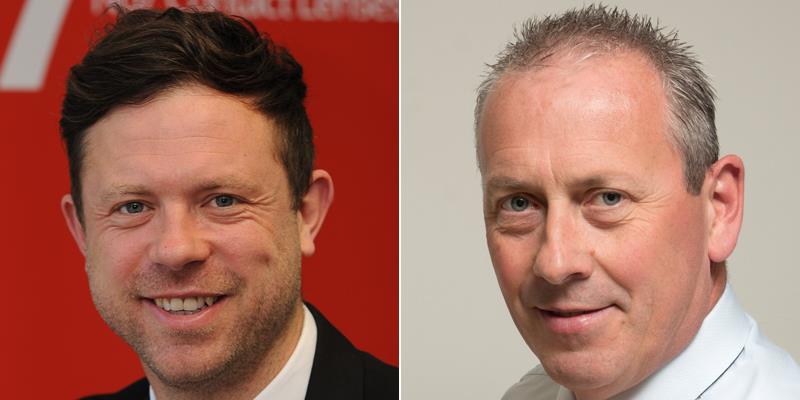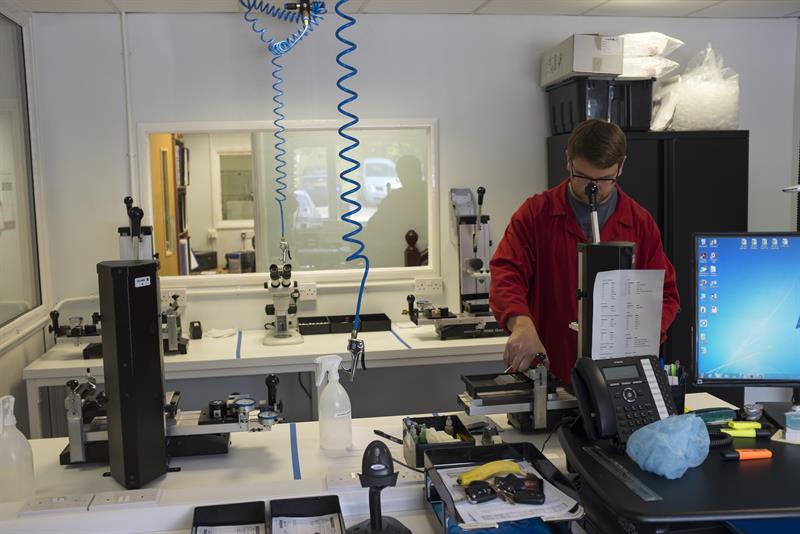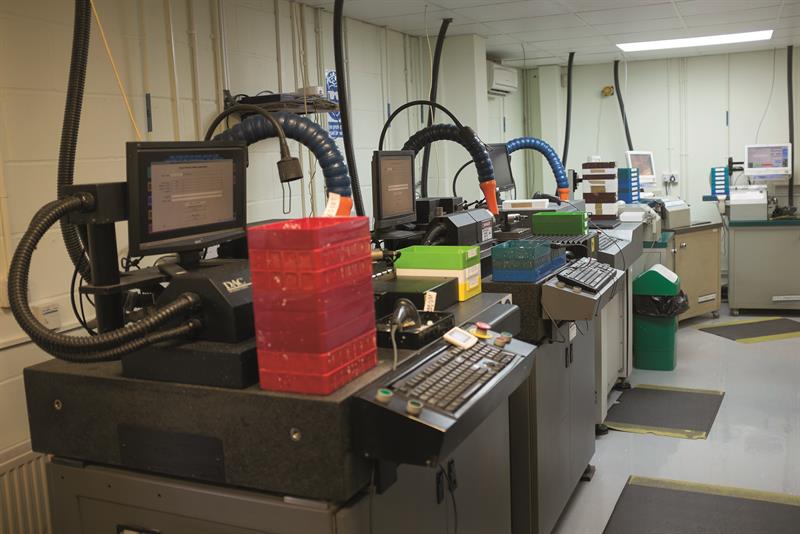Walking around No 7’s premises in Hastings it rapidly becomes evident what a multifaceted proposition running a contact lens manufacturing business is. Tracking a contact lens on its path through the laboratory takes in more than a dozen delicate processes – some of which need to be accurate to the nanometre – while the offices above hum with employees helping optical practices get the most out of the finished article.
‘It is complex,’ says Danny Pepper, sales and marketing manager at No 7. ‘There are lots of steps and nuances with the products themselves and a great deal of expertise is needed. We wouldn’t be able to do it without experienced and dedicated staff in every part of the business.’
Today No 7 employs around 60 people at its south coast facility with almost 400 years of contact lens manufacturing experience between the laboratory staff.
This is a far cry from its origins in 1982 as a start-up lab in central London.
‘The name No 7 comes for the original location at 7 Devonshire Street, Marylebone,’ explains Pepper. ‘The company started off in the basement there. My father [Ashley Pepper] and Ian Goble moved there to found the company with just the two of them and one client.’
No 7 Devonshire Street occupies an enviable position in London; only slightly more than a literal stone’s throw from Regent’s Park and surrounded by imposing establishments including the Embassy of the People’s Republic of China and the Royal Institute of Architects.

Danny Pepper, left, sales and marketing manager and, right, Kevin Taylor, technical director at No7
No surprise then that once the business successfully took off and needed space to expand, a new location was necessary.
‘In the early 1990s it moved down to Hastings,’ says Pepper. ‘It is a much cheaper place to manufacture and we came straight to our current location, albeit with less space than we have today.’
Since the move, No 7 has continued growing and has taken over, in the early 2000s, the upstairs of its original unit and then an additional unit on each side in 2006 and 2016 respectively. Key expansion points for the company have included entry into the soft lens market and integrating a formerly separate rigid gas permeable (RGP) contact lens lab into the site.
RGPs are an area of the contact lens market that No 7 is particularly associated with. However, this is just a part of the No 7 offering.
‘We have four key categories of product,’ says Pepper. ‘RGPs are the staple business – classic small corneal RGP lenses. Then we have contact lenses for irregular corneas which are larger diameter lenses – hybrids or mini sclerals sized 14mm and above. The third category is our custom soft lenses in single vision, toric and multifocal toric. Last and certainly not least is our Ortho K products. I would categorise those as the four main categories, there are all different types within each category but from the patient’s perspective that is how they are best defined.’

The latest addition to the stable is Reflex Colours, a three monthly hydrogel (soft) lens which slots into the contact lenses for irregular corneas category mentioned above and is available in single vision, toric, multifocal and toric multifocal. Launched in June, its primary use is for patients who have suffered disease, injury or congenital issues and wish to mask any perceived defect – usually by matching the colour of the other eye.
‘This product came about because we had already been doing hand painted lenses in this area,’ says Kevin Taylor, technical director at No 7. ‘It was a natural progression. Hand painted lenses are expensive and sometimes you need that level of accuracy when you are copying another eye. But we needed a cheaper, more cost-effective option to sit below that. It is a good option for people who need the service but couldn’t commit to the hand painted option.’

There are 400 man-years of experience behind the machinery
There was a two-year gestation period behind Reflex Colours with production and trials preceded by a lengthy process of researching and applying the technology.
The accompanying fitting set contains 21 basic colours, four under-prints and a limbal ring. The colours can be overlaid in any order or combination to produce as accurate a match to the desired shade as possible, which is then manufactured to order.
Any practices who need assistance on Colours or any of the other No 7 products can count on a readily available help desk overseen by Taylor.
‘The telephone service is available during standard optical practice hours of 9am to 5pm but I pick up emails at all sorts of times,’ says Taylor. ‘It is mainly consultancy on fitting questions really. Maybe they are using a new product or just haven’t fitted a particular contact lens for a while. Other times clients will send us empirical data like refraction details or keratometry. We will then devise the best fitting lens, whether it be a special lens like a toric because of what’s happening with the cornea or whether there are astigmatisms, or whether it’s a multifocal or just spherical fitting. Having the tools to assess this with topographers and the like in practice has been a big step forward.’
Going the extra mile for clients in this fashion appears to be the norm at No 7.
‘I’ve walked jobs through the lab in order to meet dispatch to make sure our clients meet the needs of patients,’ says Taylor. ‘It can make a huge difference to the person who needs those contact lenses and the practice – that’s what we are all about.’
Looking to the future Pepper is confident the company is well placed to continue helping independent practices differentiate from their competitors.
‘We are still expanding,’ he says. ‘The role of Ortho-K in myopia control means that the future is bright for that side of things and our specialist lenses. Even though the wider RGP market is declining somewhat we are still growing there too.’
‘We’ve been hearing about the death of RGPs for decades yet with good performance in comfort studies and corneal health they are most definitely still here,’ adds Taylor.
